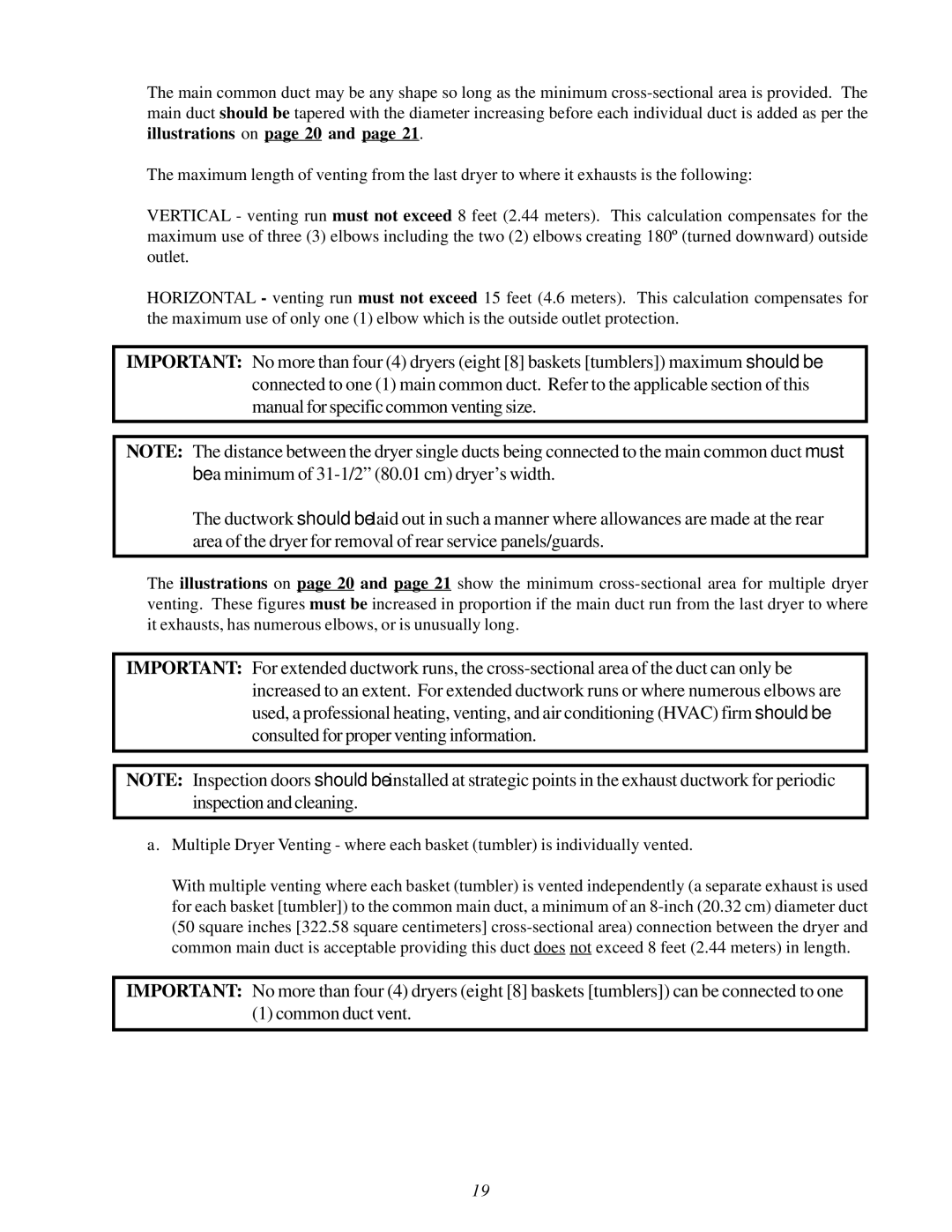WDA-530D II, ADG-530D II specifications
American Dryer Corp (ADC) has long been a leader in the manufacturing of high-performance commercial laundry equipment. Among its noteworthy offerings are the ADG-530D II and WDA-530D II models, both of which stand out for their advanced technologies, user-friendly features, and robust construction. These models are designed to meet the needs of laundromats, hotels, and other commercial laundry facilities, providing reliability and efficiency.The ADG-530D II is a dual-pocket dryer that combines efficiency with superior drying performance. One of its main features is its powerful and energy-efficient heating system, which utilizes advanced airflow technology to reduce drying times while minimizing energy consumption. This model is equipped with a state-of-the-art microprocessor control system that allows for precise temperature and time settings, enhancing flexibility for various fabric types. Additionally, the ADG-530D II includes a large capacity that can accommodate various load sizes, making it an ideal choice for heavy daily usage.
On the other hand, the WDA-530D II model serves a slightly different purpose with a focus on wet cleaning. This innovative machine offers exceptional water extraction capabilities, ensuring that fabrics retain as little moisture as possible, which also contributes to quicker drying times. The WDA-530D II utilizes advanced technology to balance water levels and optimize washing cycles, thereby extending the life of the fabrics and improving overall cleanliness. Its easy-to-use interface simplifies operation, making it suitable for staff with varying levels of experience.
Both models incorporate durable construction materials designed to withstand heavy use in busy environments. Their design prioritizes ease of maintenance, featuring removable lint screens and efficient drainage systems that streamline cleaning and upkeep. User safety is also a priority, with built-in safety features to prevent overheating and ensure reliable operation.
In summary, the ADG-530D II and WDA-530D II by American Dryer Corp represent a blend of cutting-edge technology, user-friendly features, and robust design. Whether for drying or wet cleaning, these machines are engineered to enhance productivity in commercial laundry operations while delivering exceptional performance. Their commitment to energy efficiency and fabric care makes them an excellent investment for any laundry facility looking to enhance their operational efficiency and service quality.

